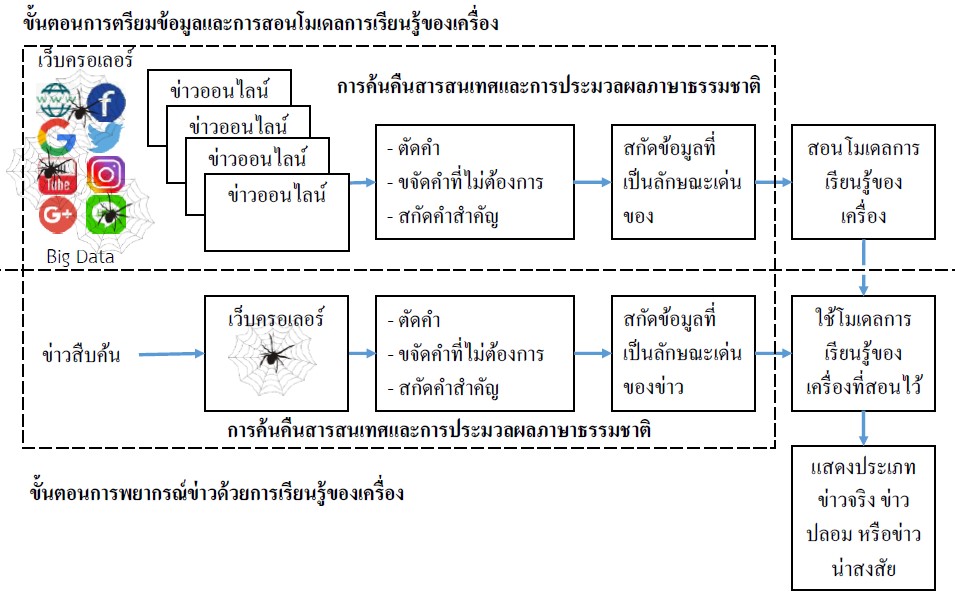Artificial Intelligent Techniques for Thai Fake News Detection
Keywords:
fake news, artificial intelligence, information retrieval, natural language processing, machine learningAbstract
With modern digital technology, it is more convenient for users to distribute news on online media. Some of them have spread a lot of fake news, which is a problem causing people to believe fake news as real news and share it with others. Currently, there is no tool to detect fake news and interrupt the spread of it. Detection of fake news is a difficult task as fake news is very dynamic. This research presents a method for detecting fake news in Thai with artificial intelligence techniques based on information retrieval, natural language processing, and machine learning. In preparing the training data, the researchers used web crawlers to collect 53,220 samples and pre-categorize them as real, fake, and suspicious news. We balanced the number of data samples in each group to avoid biasing. We trained machine learning models based on 10-fold cross-validation. The machine learning models used in the study were Logistic Regression (LR), K-Nearest Neighbor (KNN), Naïve Bayesian (NB), Multilayer Perceptron (MLP), Support Vector Machine (SVM), Random Forest (RF) and Short-Term Long-Term Memory (LSTM). Research results showed that LSTM-based deep learning with performance tests across all areas, measured with data classification accuracy, precision, recall, and f-measure. The test result score in every measure equals 1, which is the highest score. Thus, LSTM is suitable for machine learning as a fake news detection system.

Downloads
Published
Issue
Section
Categories
License
Copyright (c) 2022 The Journal of Applied Science

This work is licensed under a Creative Commons Attribution-NonCommercial-NoDerivatives 4.0 International License.

